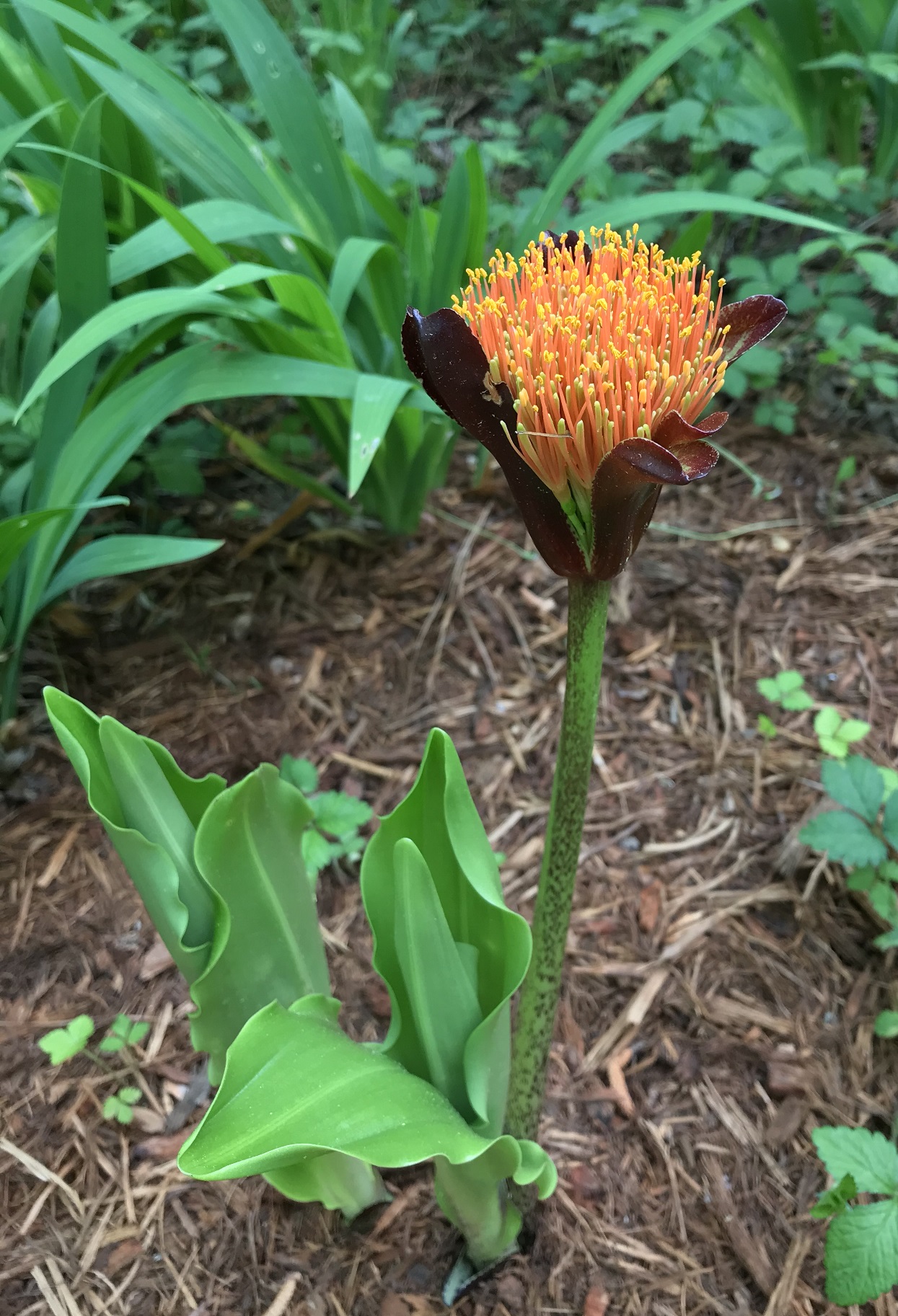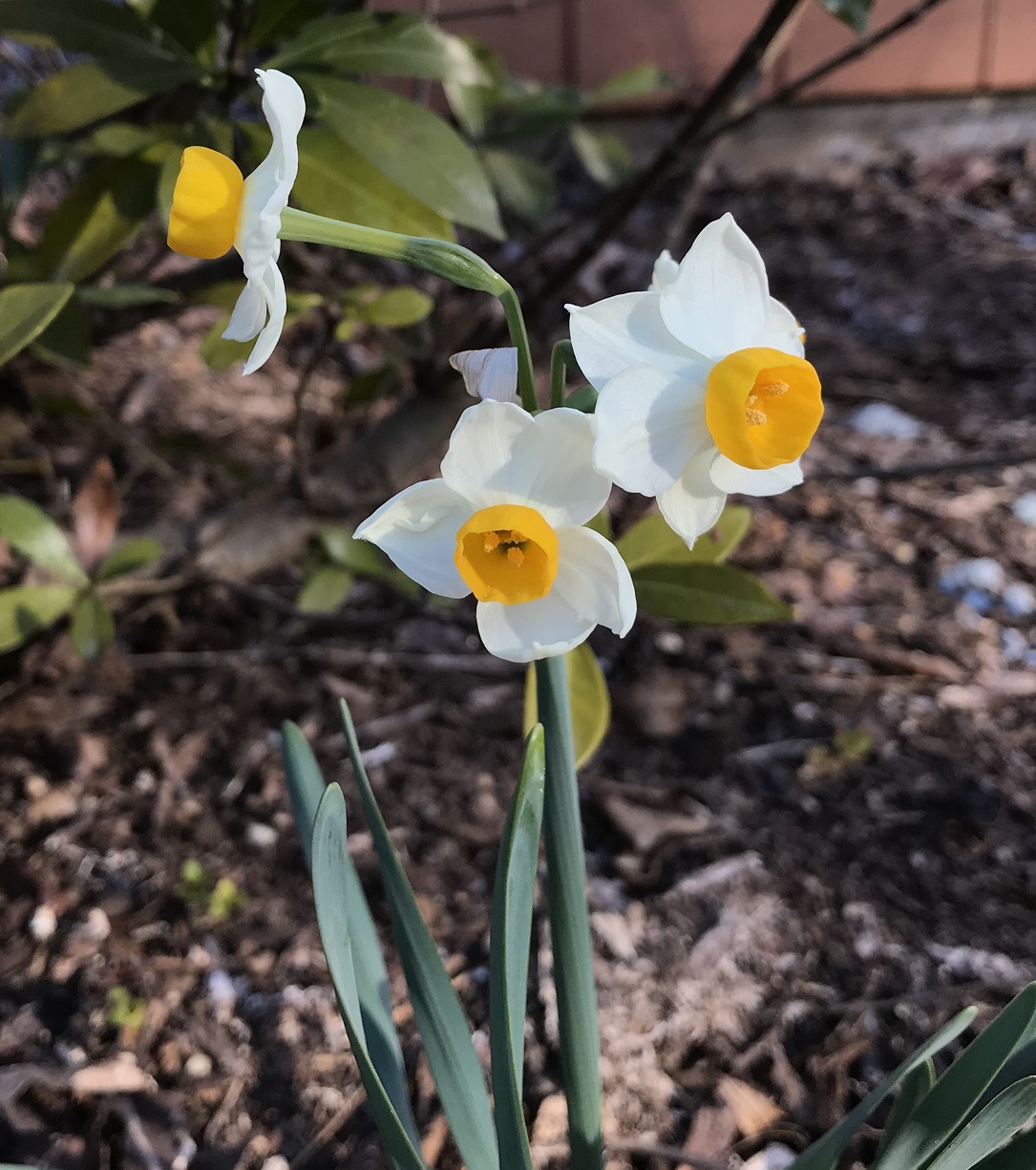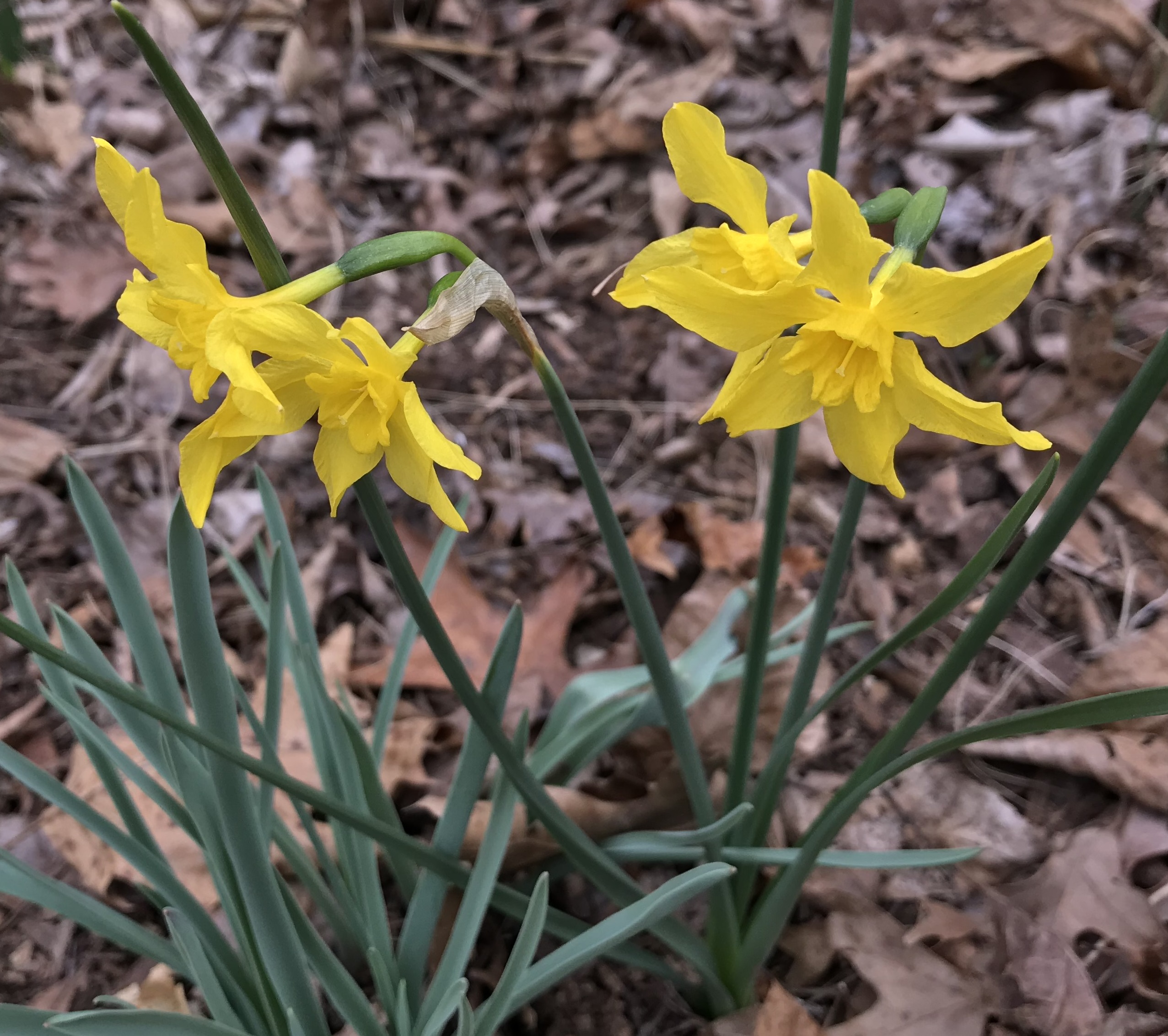
Just as the Cyrtanthus falcatus inflorescence was fading, I noticed that another tropical bulb was in bud for the first time. Eucrosia eucrosiodes is from arid scrubland in southwestern Ecuador and northern Peru. In its flower structure, leaf shape, and cultural requirements, it resembles its close relatives Eucrosia mirabilis and Eucrosia aurantiaca. I grow E. eucrosioides almost exactly the same way I grow those two species, with plenty of heat, water, and sun in summer and a warm dry rest in winter. Like its relatives, E. eucrosioides is strongly hysteranthous–that is, it flowers at the end of the dry dormant period, before new leaves are produced, so a naked inflorescence sprouts from what appears to be an empty pot.
Like E. mirabilis and E. aurantiaca bulbs, E. eucrosioides bulbs show no inclination to offset and must be grown from seed. E. mirabilis can be self-pollinated and produces viable seed, but E. aurantiaca seems to be self-sterile. I’m not sure yet whether E. eucrosioides will be self-fertile, but I have a second clone which has not yet flowered. If I can manage to flower both at the same time, perhaps an outcross will be a possibility sometime in the future.
The genus name of this plant makes perfect sense–Eucrosia means “beautiful fringe”, referring to the elongated stamens–but its species name is a little odd. In botanical Latin, the suffix -oides means “like” or “resembling”, so Eucrosia eucrosioides would be “the Eucrosia that resembles a Eucrosia.”













